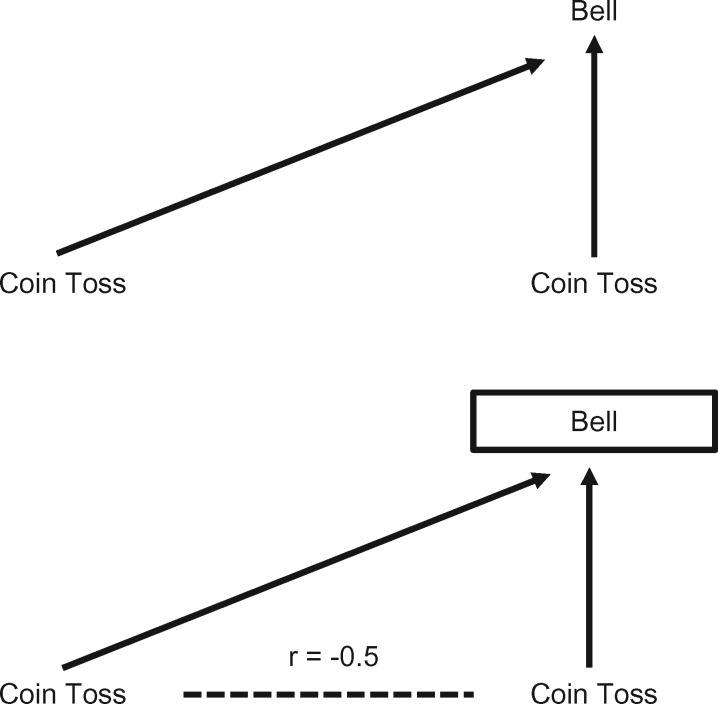Figure 1.
Illustration of collider bias. The basic premise of collider bias is shown. In this example, a bell is sounded whenever either coin come up ‘heads’. The result of one coin toss is independent of the other. However, if we hear the bell ring (i.e. we condition on the bell ringing), then if we see a tail on one coin we know there must be a head on the other–the two coin results are no longer independent and a spurious inverse correlation has been induced. Reproduced from Gage SH, Davey Smith G, Ware JJ, Flint J, Munafò MR. G = E: What GWAS can tell us about the environment. PLoS Genet 2016;12: e1005765.

